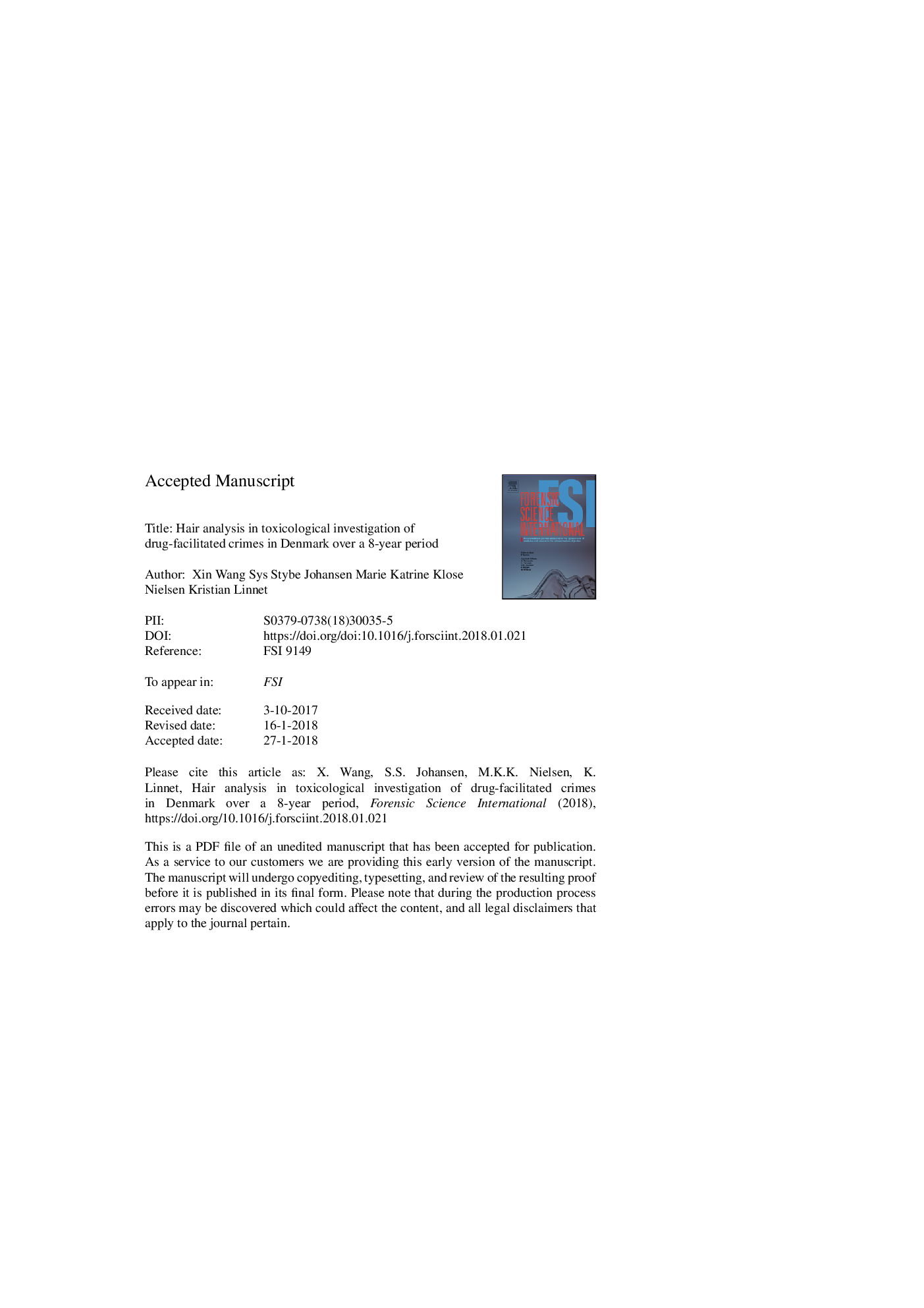| Article ID | Journal | Published Year | Pages | File Type |
|---|---|---|---|---|
| 6551225 | Forensic Science International | 2018 | 25 Pages |
Abstract
Hair can serve as a specimen for identifying past drug exposure. Segmental hair analysis may differentiate a single exposure from chronic use. Consequently, segmental hair analysis is useful for disclosing a single drug ingestion, as well as for determining repeated exposures in drug-facilitated crimes (DFCs). This paper presents an overview of toxicological investigations that have used hair analysis in DFC cases from 2009 to 2016 in Denmark. Hair concentrations were determined for 24 DFC-related drugs and metabolites, including benzodiazepines and other hypnotics, antihistamines, opioid analgesics, antipsychotics, barbiturates, and illicit drugs from DFC cases. Drug detection in hair in DFC cases following a single or few intakes of chlorprothixene, codeine, diphenhydramine, oxazepam, oxycodone, promethazine, and phenobarbital is reported for the first time in forensic toxicology. A literature review on concentrations in the published DFC-related hair cases and on concentrations in hair of these substances after single and multiple doses is included. These cases demonstrate the value of segmental hair analysis in DFCs and facilitate future interpretations of results.
Related Topics
Physical Sciences and Engineering
Chemistry
Analytical Chemistry
Authors
Xin Wang, Sys Stybe Johansen, Marie Katrine Klose Nielsen, Kristian Linnet,
